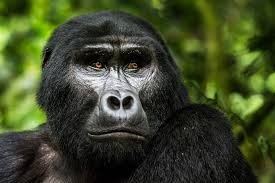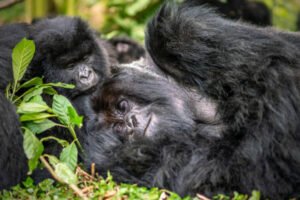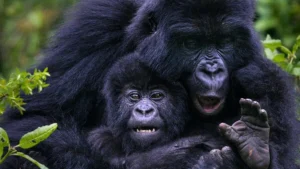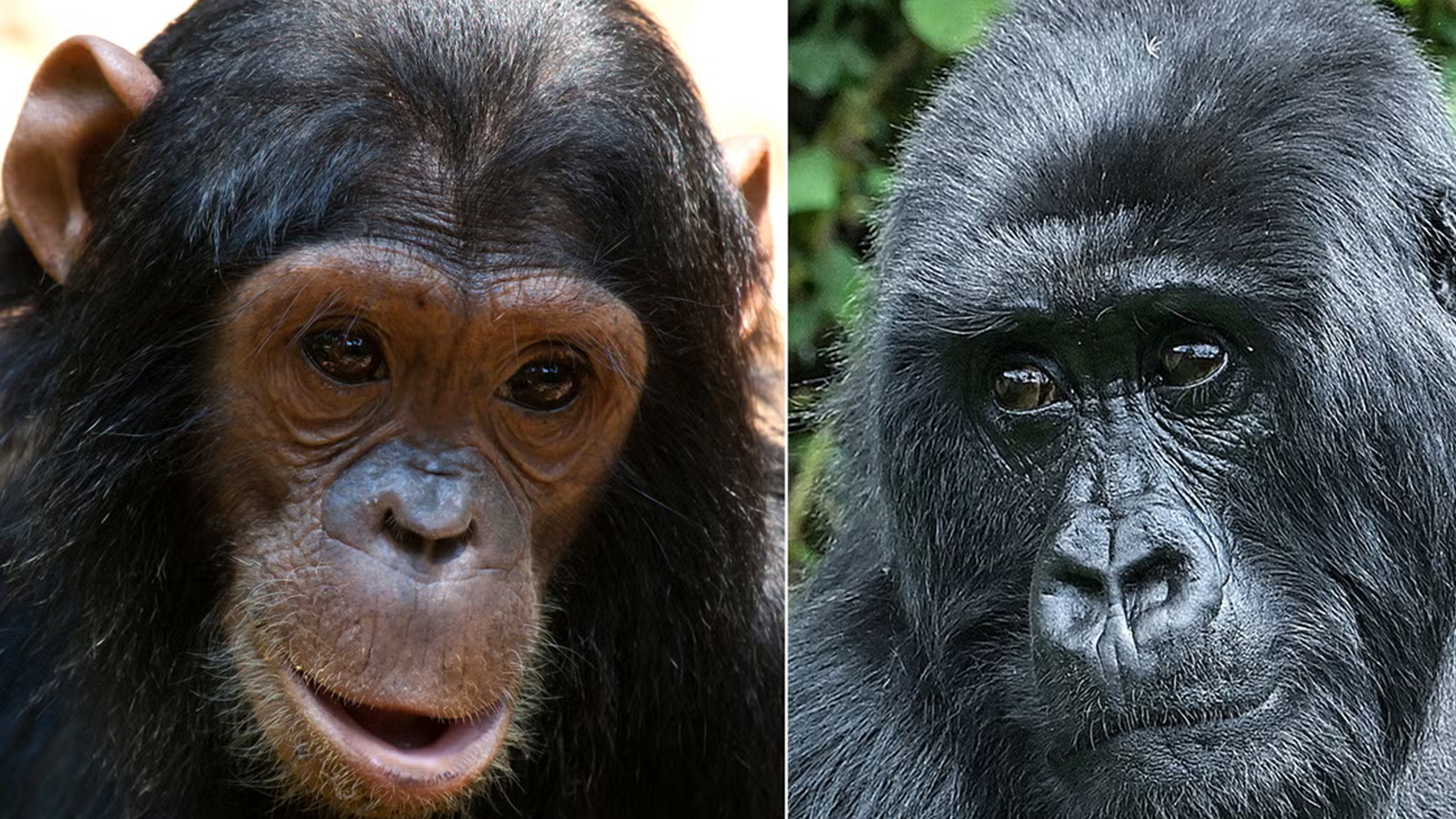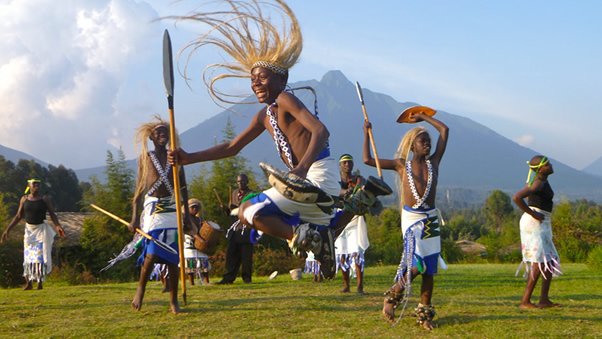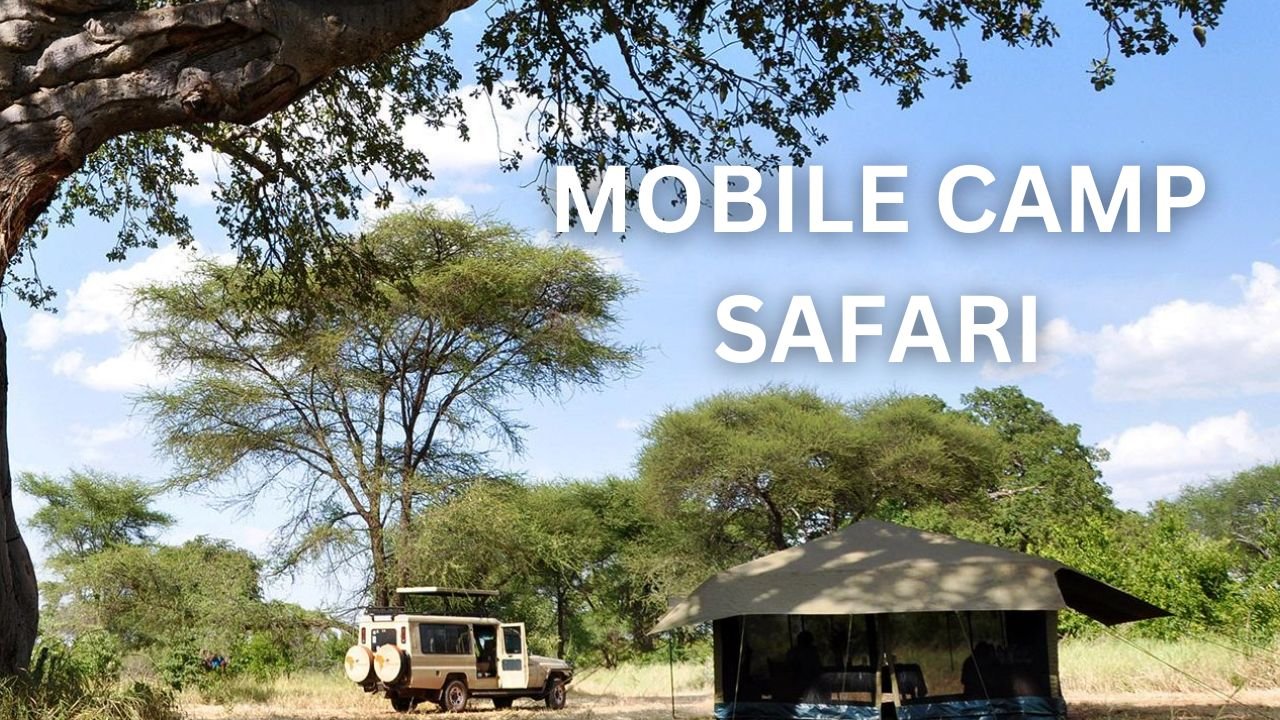Gorilla Trekking: All You Need to Know
Gorilla trekking offers one of Africa’s most profound and transformative wildlife encounters. With populations of these magnificent creatures numbering in the mere hundreds, even in protected reserves, gorillas are extraordinarily rare. Their faces and personalities are so distinct that trackers can easily identify them by name.
Africa’s great apes are found in what remains of their natural habitat, primarily in the last protected stretches of the continent’s central rainforests and gorilla parks. Through the revenue generated by gorilla trekking tourism, their populations are slowly beginning to recover.
Additionally, many scouts who once participated in the illegal poaching of gorillas and other primates have now become their protectors, safeguarding what they once harmed. This shift has been a true conservation success, and continued tourism is essential for the survival of these incredible species.
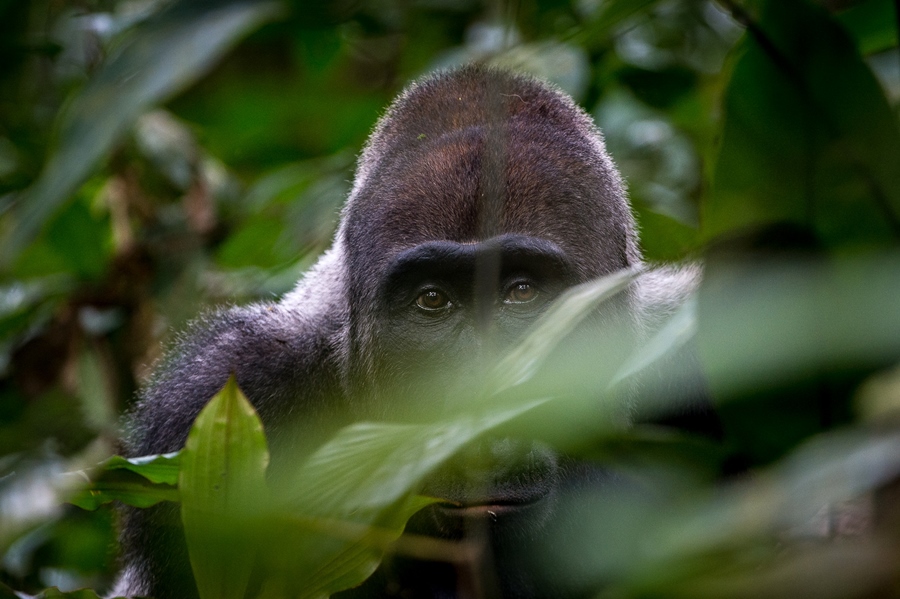
Spending time with gorillas in the wild is arguably the most intimate and awe-inspiring wildlife experience in Africa. A face-to-face encounter with these great apes in the gorilla parks of Uganda, Rwanda, or Congo will create soul-stirring memories that will last a lifetime. If you’re contemplating a gorilla trekking adventure and want to know what to expect, this guide will provide you with everything you need to know.
Why Go Gorilla Trekking?
Gorilla trekking is a rare and life-changing wildlife experience that brings you face-to-face with endangered mountain gorillas in their natural habitat. With only about 1,000 mountain gorillas left in the wild, this adventure offers a unique opportunity to observe their social behaviors, from playful juveniles to majestic silverbacks. Beyond the thrill of the encounter, your permit fees directly support conservation efforts, anti-poaching initiatives, and local community projects, ensuring these incredible primates survive for future generations.
Where to go Gorilla Trekking
Mountain gorillas are found in Uganda’s Bwindi Impenetrable Forest National Park and Rwanda’s Volcanoes National Park. Critically endangered due to deforestation and hunting, their population has dwindled to an estimated 900 individuals, clinging to survival in these two remote sanctuaries.
In contrast, the western lowland gorilla—the smaller, less shaggy cousins of mountain gorillas—has faced threats from bush meat hunting and timber harvesting in Congo, which have significantly reduced their chances of survival. These lowland gorillas inhabit swamps, primary, and secondary forests, and are also critically endangered.
Through primate research and gorilla trekking tourism, the local communities around Odzala-Kokoua National Park in Congo are beginning to prioritize conservation efforts. Job creation and investment in the region have spurred collaboration between research, tourism, and community-based projects, offering hope for a brighter future for the Congo Basin and its diverse inhabitants. Odzala-Kokoua is a sanctuary for approximately 100 mammal species and one of Africa’s most diverse primate populations.
There are few experiences as cathartic and intimate as sitting just a few meters away from a family of gorillas, observing your own humanity reflected in their social rituals and warm brown eyes. This is, undoubtedly, one of the most profound wildlife encounters you can experience in Africa—or anywhere in the world.
When to Go Gorilla Trekking

Uganda and Rwanda share a similar climate, and while gorilla trekking is a year-round activity, the optimal time to visit the rainforests falls during one of the two dry seasons. The first runs from mid-December to the end of February, and the second from early June to late September.
These periods provide the most comfortable trekking conditions, though the environment remains humid and wet with significant mud (so be sure to bring gaiters!).
In the Congo Basin, rain plays a crucial role in sustaining the region’s equatorial rainforest ecosystem, which is characterized by three distinct seasons: wet, wetter, and wettest.
The best time for gorilla trekking in Congo is during the ‘low rainfall’ season from June to September, and the ‘gentle rainfall’ season from December to February. Of these, July and August are typically the least rainy and coolest months of the year, offering the best trekking conditions.
How Much Does a Gorilla Trekking Permit Cost?
Gorilla permit prices vary by country:
- Uganda Gorilla Trekking Permit: $800 per person (Bwindi & Mgahinga)
- Rwanda Gorilla Trekking Permit:: $1,500 per person (Volcanoes National Park)
Permits must be booked in advance through official wildlife authorities (Uganda Wildlife Authority or Rwanda Development Board) or licensed tour operators. Prices are high due to strict conservation measures and limited daily permits.
Why Are Gorilla Permits So Expensive?
The high cost of gorilla trekking permits helps fund critical conservation programs, including ranger patrols, habitat protection, and community projects that reduce human-wildlife conflict. Only a limited number of permits are issued each day (typically 8–12 per gorilla family) to minimize disturbance and ensure sustainable tourism. This exclusivity, combined with the costs of maintaining national parks and supporting local communities, justifies the price.
How Do I Get a Gorilla Trekking Permit?
Permits can be secured through:
- Official wildlife authorities (Uganda Wildlife Authority or Rwanda Development Board)
- Licensed tour operators (recommended for hassle-free booking)
Since permits sell out months in advance, especially in peak season, it’s best to book at least 6–12 months ahead.
Traveller’s FAQs Answered
1. Will I Definitely See Gorillas?
Because the gorillas are closely monitored by researchers and trackers who are in regular contact with them, guides usually know the general location of the different families, giving you a 99% chance of seeing them. However, since they are wild animals, there are no absolute guarantees.
An unexpected event like a thunderstorm or a predator encounter could cause the troop to move in an entirely different direction, but scouts are usually quick to pick up their trail again. It is extremely rare for travellers not to see the gorillas during a gorilla trekking expedition.
Once you find a gorilla family, your ranger will ask you to leave everything behind except for your camera. You’ll be guided closely enough to observe the gorillas intimately without disturbing them. There are no fences separating you, only mutual respect.
The gorillas are habituated to human presence and continue with their natural behaviors—such as foraging, grooming, and napping—without fear.
The youngsters, in particular, are often curious about humans and can be quite playful, much to the amusement (and occasional frustration) of their teenage gorilla babysitters. While it’s fascinating to witness the gorillas’ placid nature, keep in mind that the dominant silverback male will always be observing your presence with a careful eye.
We recommend taking some photos but spending at least 20 minutes observing the gorillas in silence—this will give you a far deeper connection with the experience.
2. Can I Touch Them?
No, absolutely not. While it’s tempting to reach out and touch the adorable baby gorillas, it is important to remember that they are wild animals. Gorillas are incredibly strong and unpredictable, and you could be severely injured.
Moreover, gorillas are critically endangered, and human diseases pose a significant risk to them. For their safety and well-being, you must maintain a distance of at least seven meters (22 feet) from them at all times. In some cases, you may also be required to wear a face mask.
If you’re feeling unwell, you won’t be permitted to go on a gorilla trek. Make sure you’re in excellent health before your trip and take steps to avoid picking up any illnesses during your travels. Also, once you find the gorillas, you are allowed only one hour with them to minimize stress on the animals.
That hour passes quickly, so be sure to spend part of it simply observing and taking in the experience, rather than focusing entirely on photographing them. Put down your camera for a few moments and savor the privilege of witnessing these incredible creatures in the wild.
3. Do I Have to Use a Porter?
We highly encourage you to hire a porter during your gorilla trek, even if you feel fit enough to handle the terrain, altitude, humidity, and your daypack on your own. For a small fee (around $20), you will not only make your trek more manageable, but you’ll also be providing much-needed employment to locals in nearby villages.
Many porters are former poachers, and without the opportunity to work in gorilla conservation, they may be tempted to return to illegal activities like hunting or capturing gorillas for bush meat or the wildlife-trafficking trade. The rewards offered by poaching syndicates can be financially attractive to impoverished villagers who have few other options for income.
By accepting their help and paying the fee (which is equivalent to the price of a couple of coffees back home), you are contributing to the continued conservation of gorillas and offering them an alternative means of livelihood.
Remember, in Africa, each employed person typically supports seven to nine others. Successful conservation relies on the involvement of local communities, so the more porters you employ, the greater the positive impact you’ll have.
4. How Fit Do I Have to Be?
While being fit certainly helps, you don’t need to be in top-tier physical shape to go gorilla trekking. It’s not about completing a marathon or lifting heavy weights; it’s more about being prepared for a physically demanding yet rewarding adventure.
Trekkers are typically divided into groups based on age and fitness levels. The oldest or least fit individuals are generally assigned to the gorilla family that’s closest to the starting point. Rest assured, you won’t be separated from family members or friends—everyone in your group will stay together, and the pace will be adjusted to accommodate the slowest walkers for safety and comfort.
The fittest or youngest trekkers are usually chosen to visit the gorilla family that is further away, as their higher energy levels make them more suited for the longer hike. Your guides will assess how well the group is managing and will stop for breaks as needed, whether it’s to drink water, take in a beautiful view, or enjoy a snack.
A packed lunch often includes water, energy-rich foods such as nuts, fruits like bananas and apples, chocolate bars, sandwiches, and local treats like ‘rolled eggs’ (cold omelettes).
The trek is easiest during the dry season. When it rains, the mud can make trails slippery and the trek more challenging. Additionally, the gorillas may seek shelter in the trees or their nests, making them harder to find. To better observe their movements and behavior, bring lightweight binoculars.
Keep in mind that the gorillas are excellent at moving through the dense forest, so if they’re on the move, you’ll need to keep up! The trek could require climbing, navigating steep terrain, and walking through thick vegetation, so it’s best to prepare yourself for a physical challenge, but one that is absolutely worth it.
5. Can Children Go Gorilla Trekking?
The minimum age for gorilla trekking in Rwanda, Uganda, and Congo is 15 years old. This age restriction is based on several important factors to ensure both the safety of the gorillas and the children.
- Risk of Disturbance: Children may struggle to remain calm in situations where a gorilla mock-charges, which can sometimes occur if the gorillas feel threatened. While such charges are rare, they are intimidating, especially if a 180-kilogram (397-pound) silverback is involved. In these cases, children might be more likely to react out of fear by screaming or running, which could escalate the situation and provoke a chase.
- Health Concerns: Children’s immune systems are still developing, making them more susceptible to infectious diseases like the flu. These diseases can be transmitted to gorillas, and the consequences can be devastating for the animals. Since the health of the gorillas is a priority in conservation efforts, children are excluded to reduce the risk of disease transmission.
- Physical Demands: Gorilla trekking can be physically demanding, requiring trekkers to navigate steep, muddy trails and dense forests. The activity demands a certain level of stamina, which many children might find challenging to maintain over the course of the trek.
- Strict Regulations: Regulations during gorilla trekking are in place to protect the primates and ensure the safety of all participants. These include maintaining a minimum distance of seven meters (22 feet) from the gorillas, speaking in low tones, and avoiding direct eye contact with the animals. The rules are easier for adults to follow, who generally have better control over their actions in such an intense wildlife encounter.
If you’re traveling with children, consider staying at lodges that offer childminding services or programs designed for younger guests.
Some lodges even have safe, child-friendly forest walks or other wildlife experiences that allow families to enjoy the natural environment without the challenges of gorilla trekking.

